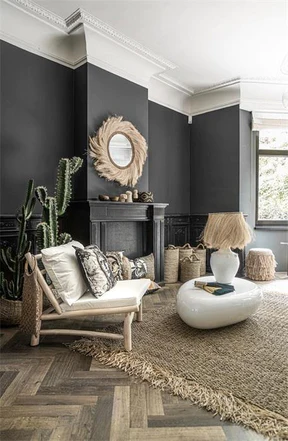7 top tips to bring your interior together
- mydenlife
- Jun 5, 2023
- 4 min read
They call it cohesive? Co-what? That feeling when you move from room to room in your home and that it just feels 'right'. Or when you settle into your sofa and all the furniture and colours just seem to fit together? Sometimes it's even identified by just knowing something isn't quite working or missing... Here's 7 top tips to help you work through to get that cohesive space people talk about!

1: Start with your colour palette. Choose colours that you love and use them as a starting point for your room scheme. Consider the 60:30:10 rule where 60% of your room should be your dominant, main colour - so think walls and large pieces of furniture. 30% should then be your secondary colour - maybe accent walls or window treatments and finally 10 percent should be an accent colour - such as throws, cushions or artwork.
Once you have a room you are happy with then consider how those colours work with the next room. Think about your sightlines between rooms and how those colours work together. That way you will feel a natural flow as you move through the house. You can also look to take a little of the colours into the next room as an accent to draw things together.
2: Consider the style of your home. Your design scheme should reflect the style of your home. That may mean allowing nods to the era the home was built in by mixing vintage and modern. Or it could be that you tap into the surroundings from coastal to woodland to use as a base for the design. Once you have identified your style then be sure to follow that approach throughout your home to keep things feeling cohesive.
3: Get your base canvas right. If possible lay the same flooring throughout, whether it be hard wood, engineered flooring, carpet, whichever. The same goes for mouldings and trim: coving, skirting, doors and windows. If you coordinate both style and colours it will make the base space cohesive. Try to keep the flooring down to similar tones of wood or colours (unless breaking with a tile) to keep a sense of unity.

4: Use repetition: Repeat patterns, shapes or colours throughout your space to create a sense of continuity. For example, if you have a striped rug, consider incorporating stripes in your throw pillows or curtains. Or if you have an oval dining table then consider an oval rug to anchor the space. By repeating shapes through the house you can build that cohesive feel. As I look around my home I have a round vintage ercol coffee table with a over-sized round wall mirror and then circular opaline glass wall lights. The rest of the room is rectangles from the sofa, rug and shutters to the tv and cabinets, so the balance helps soften things and having multiple circular items makes it a motif and feels cohesive. Mixing different patterns and textures can add interest and depth to your design scheme. Just be sure to choose patterns and textures that complement each other by keeping within the same colour palettes. If you have a large pattern on one textile then pair it with a smaller motif in a complementary colour.

5: Vary scale. by varying the scale of your decorative items you can add visual interest. And by repeating this idea in rooms throughout your home you are adding a visual style that becomes cohesive. So how to vary the scale? For example, if you have a large piece of art, consider pairing it with smaller accessories to balance the scale. By layering items on a shelf you can add depth of interest to a room too. By introducing over sized items such as mirrors, lampshades or artwork you can make a real statement and impact in your home.
6: Pay attention to lighting. Your lighting can have a huge impact on the look and feel of your space. Be sure to choose lighting that complements your design scheme and enhances the overall ambiance of your space. But make sure you are covering all functional needs for lighting too. You can read more on that in my lighting blog here. From a design perspective think about the era and style of your property first, then colour and shapes and that should help guide you to something that will work well in the space.
7: Edit and simplify. Edit your decorative items and simplify your design scheme by removing anything that doesn't fit in or detracts from the overall look you're trying to achieve. As Coco Chanel always said:
Before you leave the house, look in the mirror and take at least one thing off.
It doesn't mean the item is gone forever but perhaps can be repurposed elsewhere in the home. It's your chance to get creative and look at those lovely items you own with fresh eyes again.

Creating a cohesive design scheme doesn't happen overnight it does take time and effort. but with these tips, you can create a space that is stylish, comfortable, and reflects your personal style.
Photo Credits: Home Designing, Otto Tiles, Little Greene, Neptune, DEN LIFE interiors, Tapi, Sunset, Palatial Living, Soho Home, Etsy, Floe & Joe, Jess Ann Kirby, Home Design, Home to Love
































Comments